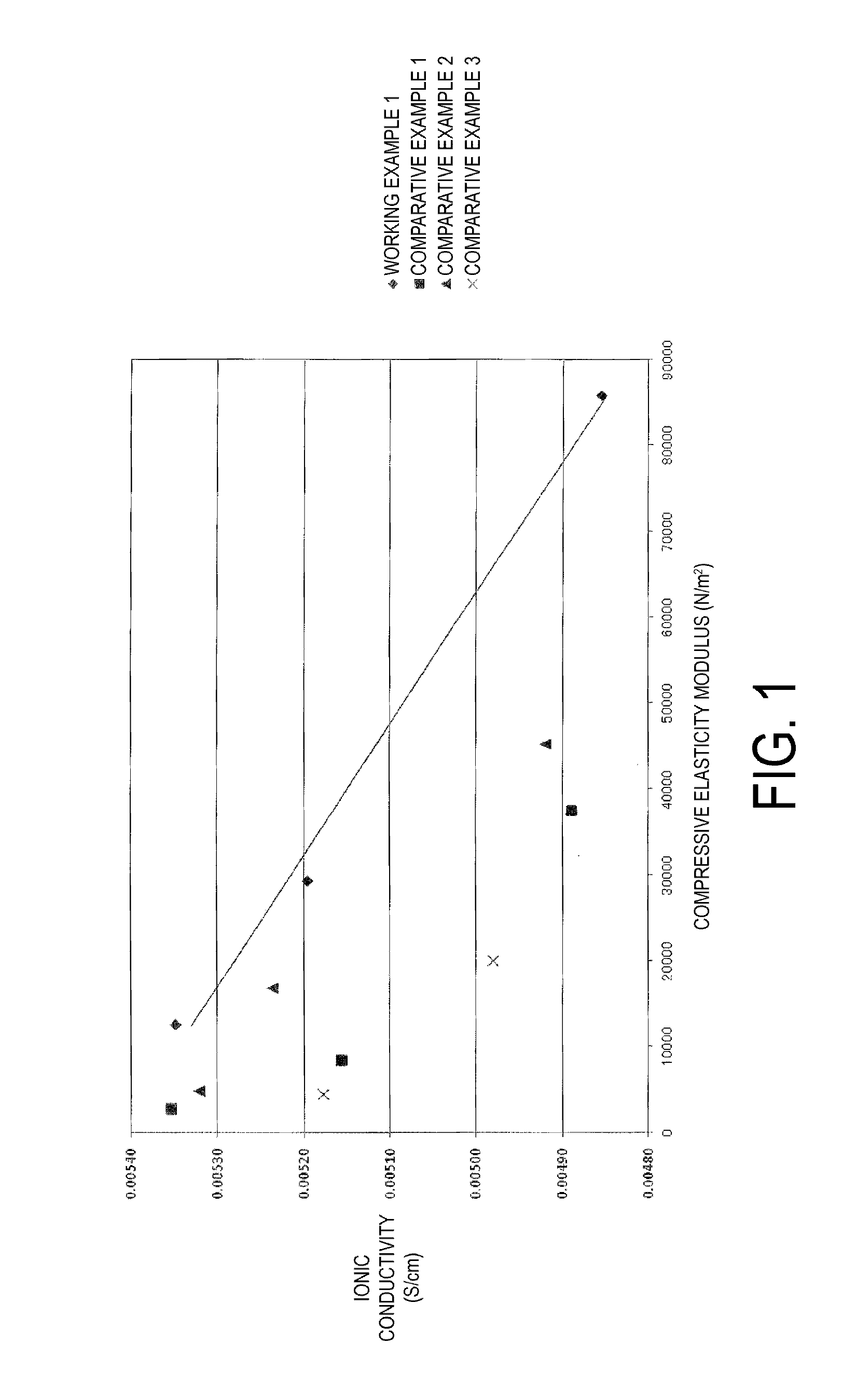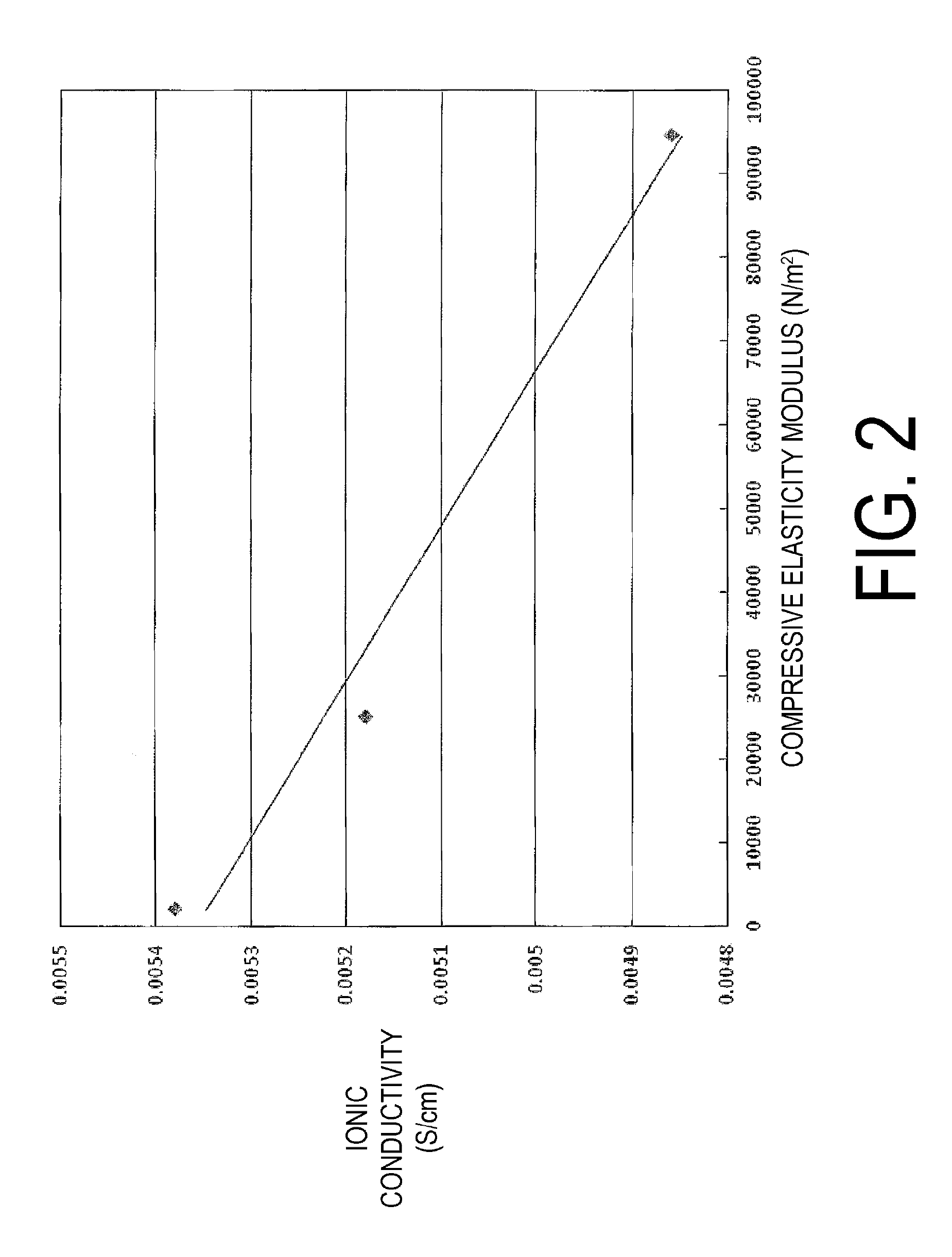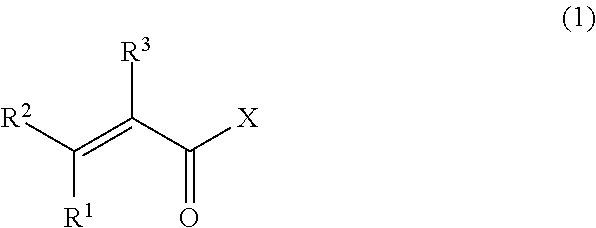Vinylidene fluoride copolymer, method for producing the same, gel electrolyte, and non-aqueous battery
a technology of vinyl fluoride and copolymer, which is applied in the direction of electrolyte immobilisation/gelification, electrolyte immobilisation, electrolyte immobilisation, etc., can solve the problems of reducing gel strength and critical issues affecting the achievement of both and achieve excellent balance between ionic conductivity and gel strength
- Summary
- Abstract
- Description
- Claims
- Application Information
AI Technical Summary
Benefits of technology
Problems solved by technology
Method used
Image
Examples
working example 1
Production of Vinylidene Fluoride Copolymer (1)
[0108]First, 7,800 g of ion-exchanged water, 4.2 g of Metolose SM-100 (manufactured by Shin-Etsu Chemical Co., Ltd.), 3.3 g of acryloyloxyethyl succinate (AES), 25.5 g of a 50 wt. % di-i-propyl peroxy dicarbonate (IPP)-Freon 225 cb solution, 2,700 g of vinylidene fluoride (VDF), and 300 g of hexafluoropropylene (HFP) were charged into an autoclave with an internal volume of 10 liters and were heated to 29° C.
[0109]A 50 wt. % acryloyloxyethyl succinate-methanol solution was then gradually added at a rate of 0.1 g / min while the temperature was maintained at 29° C. A total of 32.1 g of acryloyloxyethyl succinate was added, including the amount added initially. Polymerization was performed for a total of 23 hours from the start of heating.
[0110]After polymerization was ended, the polymer slurry was heat-treated for 60 minutes at 95° C. The polymer slurry was then dehydrated, washed with water, and dried again for 20 hours at 80° C. to obtai...
working example 2
Production of Vinylidene Fluoride Copolymer (2))
[0147]First, 1,040 g of ion-exchanged water, 0.56 g of Metolose SM-100, 3.40 g of a 50 wt. % di-i-propyl peroxy dicarbonate-1,1,2,2-tetrafluoroethyl-2,2,2-trifluoroethyl ether solution, 360 g of vinylidene fluoride, and 40 g of hexafluoropropylene (HFP) were charged into an autoclave with an internal volume of 2 liters and were heated to 29° C.
[0148]A total of 48 g of a 3 wt. % acrylic acid (AA) aqueous solution was then gradually added at a rate of 0.08 g / min while the temperature was maintained at 29° C. Polymerization was performed for a total of 22.5 hours from the start of heating.
[0149]After polymerization was ended, the polymer slurry was heat-treated for 60 minutes at 95° C. The polymer slurry was then dehydrated, washed with water, and dried again for 20 minutes at 80° C. to obtain a polymer powder (vinylidene fluoride copolymer (2)).
[0150]The polymer yield was 83%, and the inherent viscosity of the obtained polymer was 2.20 d...
PUM
| Property | Measurement | Unit |
|---|---|---|
| Electrical conductivity | aaaaa | aaaaa |
| Gel strength | aaaaa | aaaaa |
Abstract
Description
Claims
Application Information
 Login to View More
Login to View More - R&D
- Intellectual Property
- Life Sciences
- Materials
- Tech Scout
- Unparalleled Data Quality
- Higher Quality Content
- 60% Fewer Hallucinations
Browse by: Latest US Patents, China's latest patents, Technical Efficacy Thesaurus, Application Domain, Technology Topic, Popular Technical Reports.
© 2025 PatSnap. All rights reserved.Legal|Privacy policy|Modern Slavery Act Transparency Statement|Sitemap|About US| Contact US: help@patsnap.com



